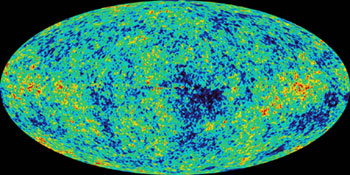 |
 |
 |
 |
 |
||
| Science of Light -> Microwaves |
|
Microwave radiation consists of electromagnetic waves in the 1 GHz to 1 THz (1000 GHz), or roughly 300mm (30cm) to 300µm (0.3mm), range. Microwaves are the second longest wave in the electromagnetic spectrum (radio waves are the longest). Another way to describe microwaves is "high energy radio waves". Frequently, the two are combined in the particular purpose they are used for. The microwave/radio band is used for communications (cell phones, satellite, WiFi, microwave relay), cooking (microwave ovens), radar (weather, military), astronomy, medical applications (diathermy), manufacturing, and other uses. Newer cordless phones, WiFi, and microwave ovens share the same microwave band at approximately 2.4GHz, and can thus interfere with each other. Microwave Astronomy Microwave astronomy involves looking at high-energy radio waves. Microwaves are useful, as they allow us to look at what the universe was like right at its birth.As microwaves are hard to observe from the ground, space-based telescopes are used. There have been a number of probes launched to map the entire sky in the microwave band, which each probe having progressively better resolution. It is most common for microwave observatories to examine the Cosmic Microwave Background (CMB), which is the radiation left over from when the universe was first created. The result from the most recent space-born microwave telescope, the Wilkinson Microwave Anisotropy Probe (WMAP), has helped to accurately determine the age of the universe within 1% accuracy (13.7 billion years), and also gave an idea of what the universe looked like less than 400,000 years after the big bang.
The image to the left depicts the temperature of the gasses shortly after the big bang. The variations in colour are over-densities which became the building blocks of the galaxies, stars and planets we see today. Microwave radiation is observed and studied in many other interesting sources. |
|
